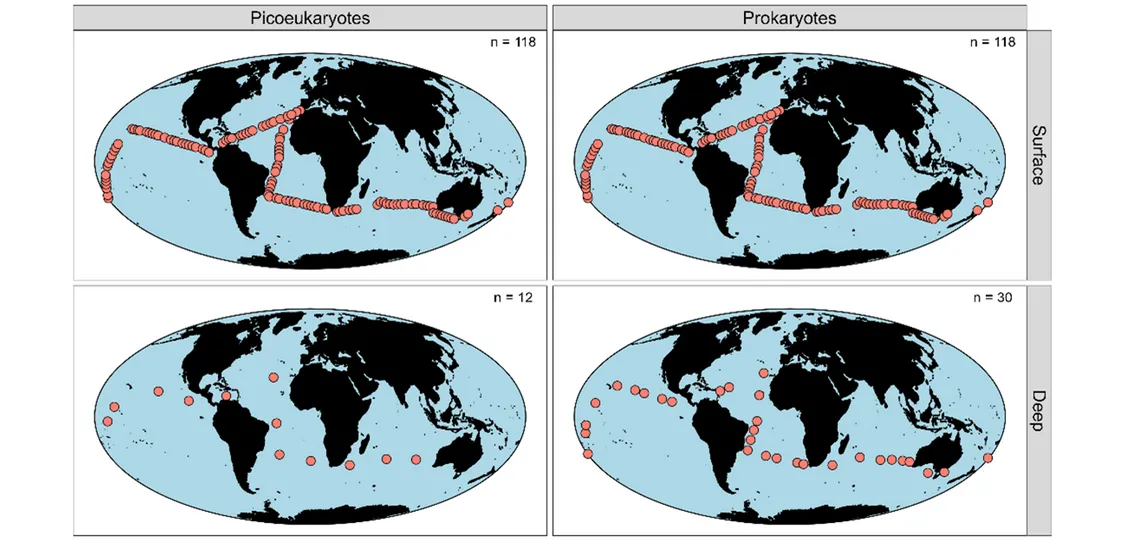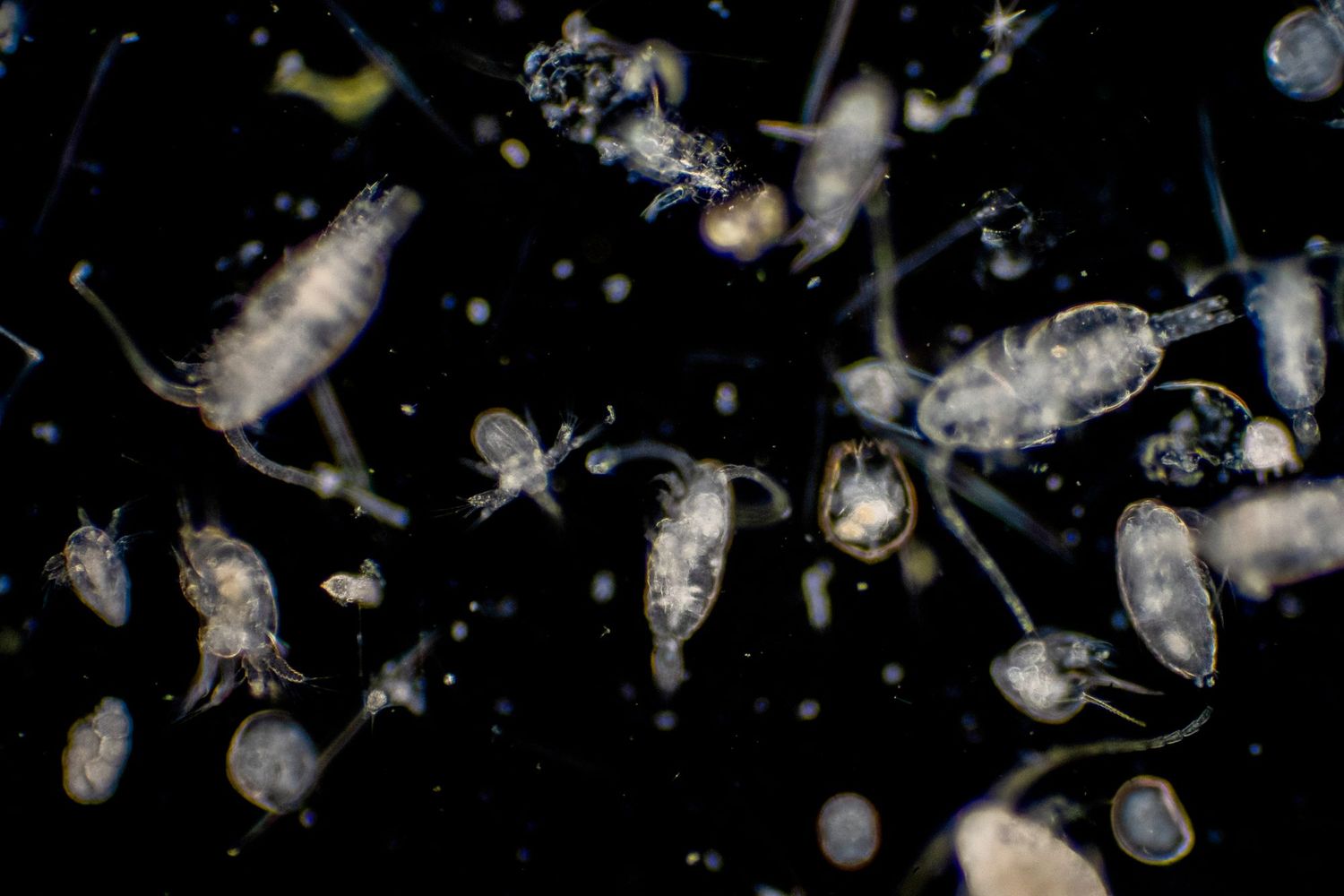By Ernesto Villarino (AZTI)
Marine microbes are tiny creatures living in all corners of the oceans from the surface to the dark sea with a diversity and complexity that rivals all life on earth. Invisible to the naked eye, these guys include bacteria, archaea, viruses, protists, and fungi. They are not the best swimmers; however, they are smart to disperse and colonize new places in the ocean helped by oceanic currents. Despite their small size and limited mobility, they are extremely important ocean engineers: they sustain marine food webs providing food to bigger fishes, mediate many chemical transformations in biogeochemical cycles, and export carbon down to the seabed regulating the earth’s climate. For these reasons, it is essential to know where microbes are and what they do and to investigate which factors limit their distributions, if we are to understand the structure and function of the marine microbiome.
We recently published a new paper that compares changes in community composition (beta-diversity)of prokaryotes (bacteria and archaea), and picoeukaryotes (protists), which are bigger than prokaryotes, in the surface and deep ocean, and examine how these patterns are tied to spatial and environmental gradients.

Map showing the Malaspina sites for picoeukaryotes and prokaryotes in the surface and deep ocean. n indicates the number of sites
To do this, we used samples collected in the Malaspina expedition identified using genetic techniques across the tropical and subtropical oceans. The main findings from our study are:
- Horizontal gradients in microbial community assembly differed across ocean depths and biological groups. Community similarity for prokaryotes was 38.9% on the surface and 51.4% in the deep ocean, compared to the similarity of 25.8 and 12.1% in the surface and deep ocean, respectively, for picoeukaryotes. The higher horizontal community similarity of picoeukaryotes on the surface compared to the deep ocean may be driven by strong surface oceanic currents. In contrast, the similar horizontal community similarity of marine prokaryotes at the surface and in the deep could be caused by their extremely high dispersal.
- The mechanisms shaping the biogeography of marine microbes also differed across depths. In the surface ocean, the environment filters prokaryotic communities to a greater extent than picoeukaryote communities. On the other hand, dispersal limitation, alongside niche specialization, drives the biogeography of deep ocean microbial communities.
Overall, these findings expand the current understanding of the ecological mechanisms underlying distributional patterns of marine microbial diversity in the global ocean, within MISSION ATLANTIC WP3 “Pelagic Mapping: Ecosystems, Resources, and Pressures”. Our work aims to map the pelagic biogeography of biological communities in 3D across the Atlantic biome, and this study contributes to WP3 by showing the importance of 3D in community assembly and comparing the Atlantic with other basins and biomes, to better understand how levels of biodiversity are maintained both in the surface and deep ocean.
Ernesto Villarino and Guillem Chust from AZTI and Andrew Barton from Scripps Institution of Oceanography coordinated this publication
You can download the publication here!
